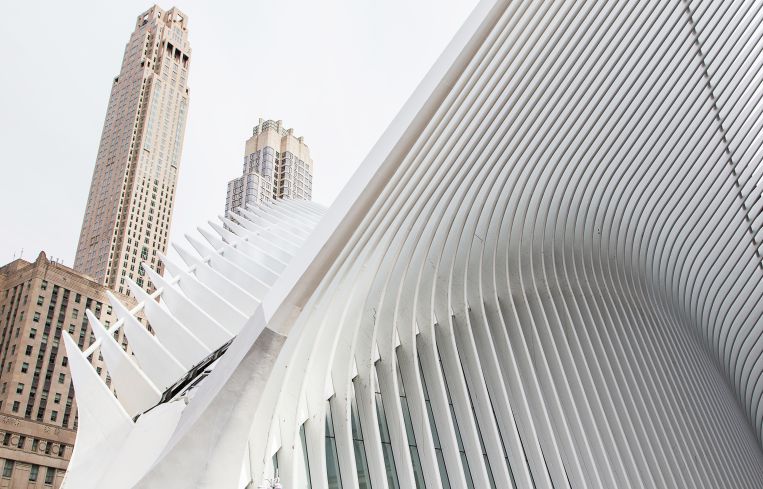New York Finally Opens Its $4 Billion, Long-Awaited Santiago Calatrava-Designed Toy
By Terence Cullen March 9, 2016 1:00 pm
reprints
Much like the most iconic New York City properties, it seems likes everyone’s got an opinion on the new Santiago Calatrava-designed PATH station at the World Trade Center called the Oculus.
With the station’s soft opening last week, real estate watchdogs have been chiming in on its premiere. An architecture critic for The New York Times highlighted that the approximately $4 billion station was double its original budget. Both he and a columnist from The New York Post said the design (representing the wings of a bird) looks more like a dinosaur skeleton. The Post columnist went so far as to dub it “Calatrasaurus,” last month. Outgoing Port Authority of New York & New Jersey Executive Director Patrick Foye labeled it a “symbol of excess.”
Or, because of its delayed opening and excessive budget, it might even earn such nicknames as “Calatastrophe” or “Calatravesty.”
But let’s put the politics and the word play aside and get to the numbers. The station can accommodate more than 250,000 commuters per day on PATH lines running between the station and New Jersey, according to Skanska, one of the construction firms that built the center. That’s more commuters than Los Angeles and Miami train riders each day combined.
There will be roughly 225,000 square feet of retail and restaurant space, which is managed by Australian shopping center giant Westfield. The company is expected to open the facility later this year following issues with leaking water, as the Times reported in November 2015. Once the $1.4 billion shopping center does open, it will feature an Apple store, a satellite of Eataly and Kate Spade amid the rush of commuters and tourists.
First construction has to wrap up after 12 years of work. While many are upset that building the transit hub has taken longer than expected (it was supposed to be completed 10 years ago), some of the numbers are simply jaw-dropping. The Oculus is made of 11,500 tons of steel that were shipped more than 4,700 miles from Italy to the Red Hook section of Brooklyn and stored under the Manhattan Bridge, according to Skanska. Overnight these steel beams were brought across the river and into the Downtown station site.
Putting up the steel took a combined 612,300 work hours, according to the construction company. About 140 ironworkers were used at the peak of construction to erect the beams, which are held together with 2,255 welded joints. The highest beam is 202 feet, according to the company. How much does a piece of metal that long weigh? Well, about 80 tons, which equals nearly 30 SUVs.
Of those overarching beams hanging above the street, the tallest is 185 feet above the ground. Sure, the structure looks dwarfed by the imposing 4 World Trade Center and its under-construction sister 3 World Trade Center, but for a little perspective, that tallest beam is about the height of the Plaza Hotel.


